EDGAR RACY VISTA GROSSA




 GROSSA | TURN A BLIND EYE CURADORIA | CURATOR BY PAULA BORGHI ABERTURA 22 DE OUTUBRO DE 2022 DAS 11:00 ÀS 16:00 HORAS
GROSSA | TURN A BLIND EYE CURADORIA | CURATOR BY PAULA BORGHI ABERTURA 22 DE OUTUBRO DE 2022 DAS 11:00 ÀS 16:00 HORAS
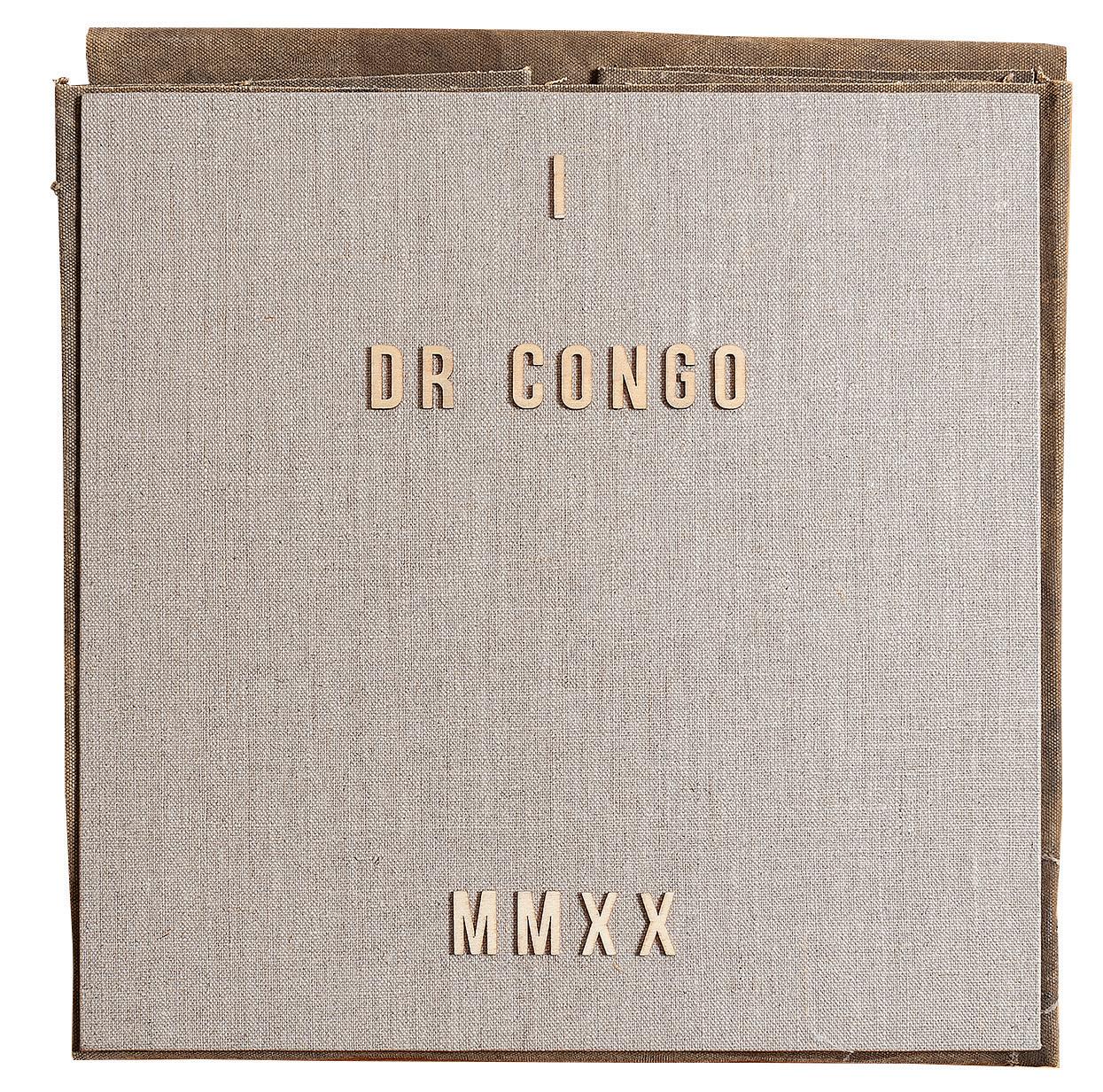
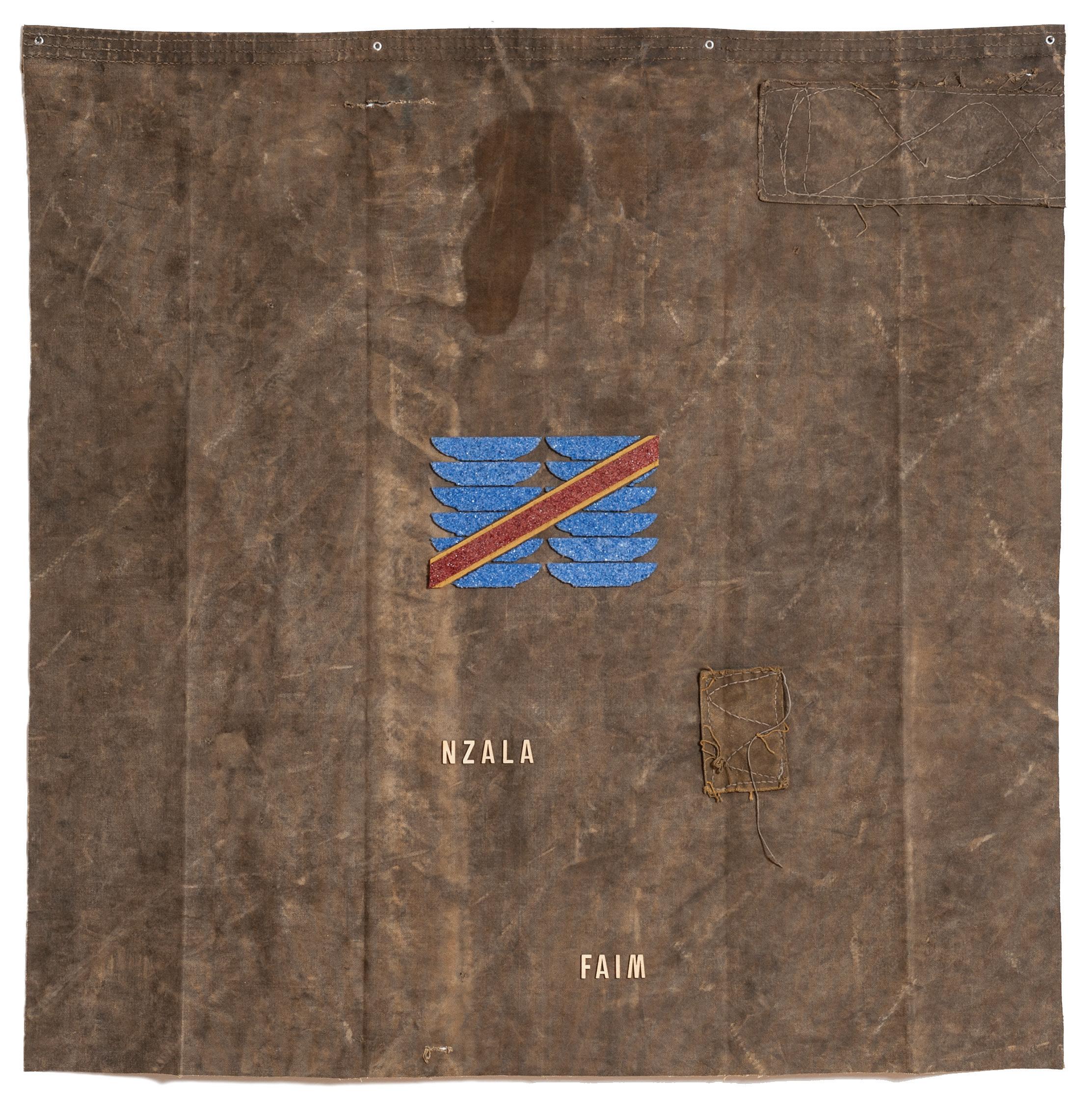
Muitas das expressões linguísticas fazem referência às características próprias do local em que se encontram, em decorrência, sobretudo, das nuances culturais, sociais e políticas que as perpassam. São modos de dizer que se comportam como sintomas regionais, que dificilmente conseguem ser traduzidos para outro idioma, quanto mais manter seus significados simbólicos e semânticos em outra língua. Isso porque algumas dessas expressões nada mais são do que arranjos de palavras que vêm ao mundo com o intuito de palavrear aquilo que até então era inefável ou que não pode ser dito com suas próprias palavras.
Ao traduzir para o inglês o título da exposição tem-se “Thick View”, ao pé da letra, e, por uma tradução mais sensível ao seu significado expressivo, “Turn a Blind Eye”. De modo que, ao se mudar a perspectiva do local, a expressão “vista grossa” no Brasil pode ser completamente diferente de “turn a blind eye” nos EUA, por exemplo. Pois, por mais que ambas comuniquem um mesmo assunto, a divergência do entendimento sobre elas é capaz de constituir um abismo naquilo que está subentendido em cada cultura. Não há dúvida de que em qualquer país do mundo pode-se fazer vista grossa, mas isso não significa que esta será feita da mesma forma. Para além das subjetividades que constituem as características regionais, cabe mencionar o tempo enquanto determinante para a compreensão de determinadas expressões. Por exemplo, fazer vista grossa em um mesmo local nos dias de hoje é completamente diferente do que dez anos atrás. Já fazer vista grossa
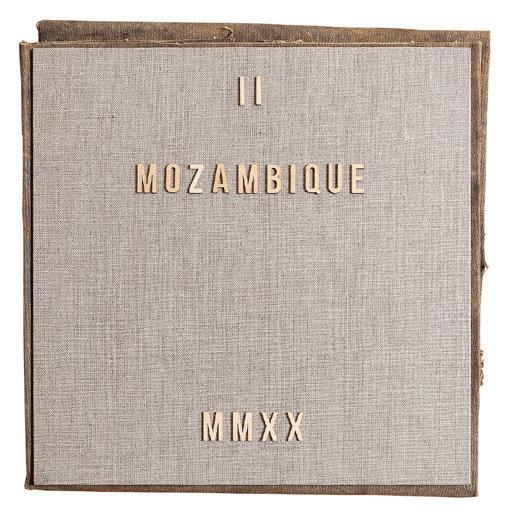
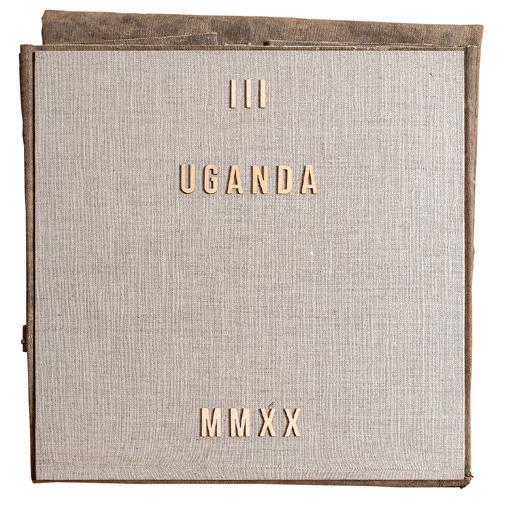

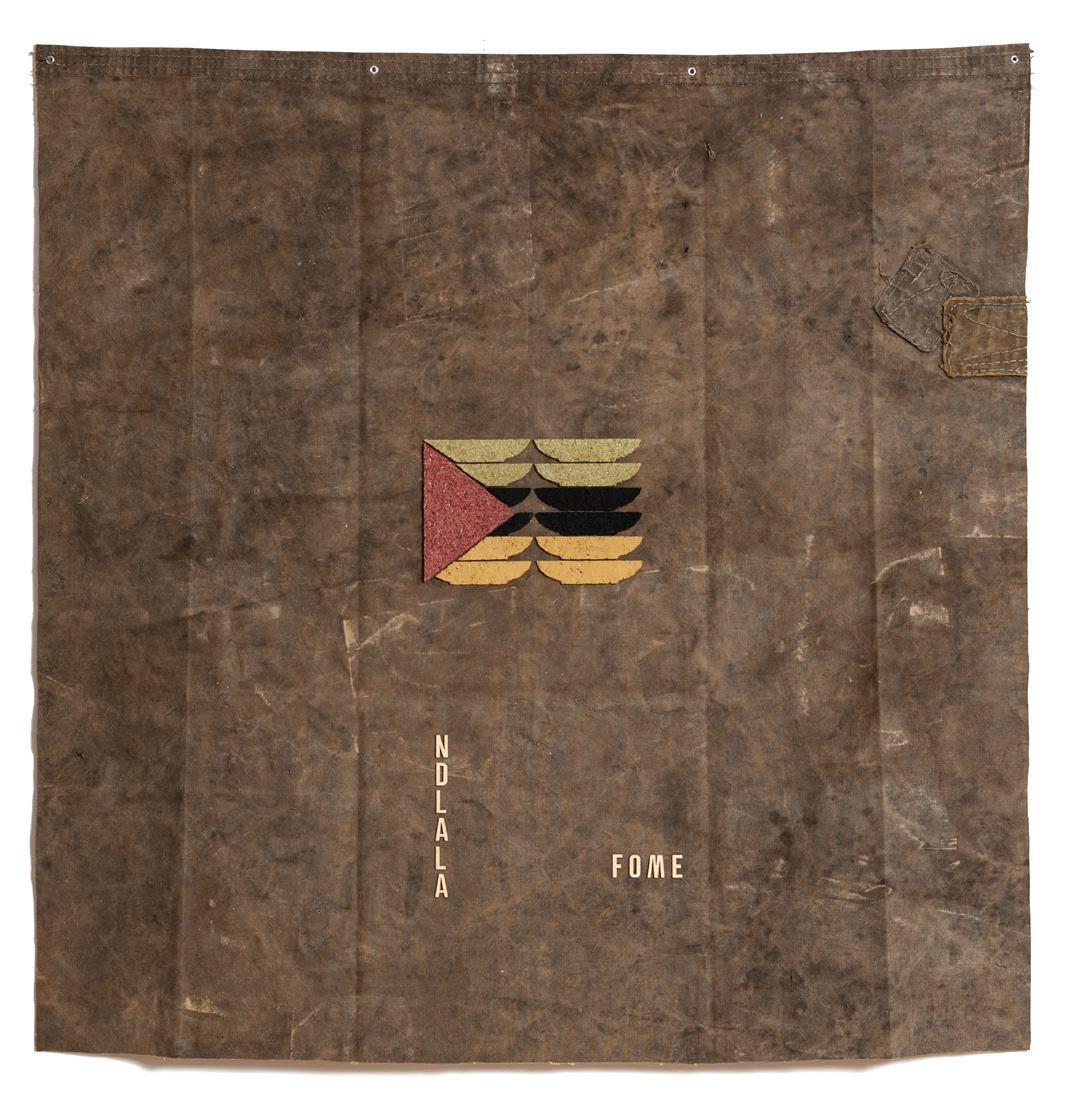
Many of the linguistic expressions refer to the aspects of a place in which they are embedded, mainly due to cultural, social and political nuances that permeate them. These are ways of saying that they behave as regional symptoms, which can hardly be translated into another language, let alone maintain their symbolic and semantic meanings in another language. That is because some of these expressions are nothing more than arrays of words that come into the world in order to speak what until then was ineffable or that could not be said in their own words.
When translated word-for-word into English, the title of the exhibition (“Vista Grossa”) arises as “Thick View”. However, the translation “Turn a Blind Eye” becomes the most sensible and sensitive choice to its expressive meaning. So that, when changing the perspective of the place, the expression “vista grossa” in Brazil can be completely different from “turn a blind eye” in the USA, for example. As much as both convey the same subject, the divergence of comprehension about them is capable of constituting an abyss in what is implied in each culture. It is unquestionable that in any country in the world one can turn a blind eye but that does not mean that it will be done in the same way.
In addition to the subjectivities that constitute regional aspects, it is worth mentioning time as a determinant for the understanding of certain expressions. For example, turning a blind eye to something in the same place these days is completely different than it was ten years ago. Turning a blind eye in different places and temporalities makes its understanding different. Just as in physics, time and space act together in the world and in its reading.
em locais e temporalidades distintas faz com que seus entendimentos sejam outros. Assim como na física, tempo e espaço agem juntos no mundo e em sua leitura.
Ao encontro desta percepção, vale mencionar que toda a exposição foi pensada e criada durante um dos períodos mais críticos que a humanidade sofreu nos últimos tempos.
Vista Grossa, pelas lentes de Edgar Racy, se dirige a uma compreensão sensível do mundo, em que comer é necessidade primeira da existência humana. Partindo do ato de comer como uma luta diária – uma luta pela sobrevivência –, o artista enfatiza o tema com poucas palavras: “Não é nada mais do que a fome”. É a partir desse ponto de fricção comum, que abarca a humanidade como um todo, que a exposição problematiza a fome enquanto emergência crucial a ser combatida para a preservação da vida.
Assim como na história da humanidade, o tema da fome é um assunto que atravessa a produção artística de Edgar Racy há tempos. Faz-se urgente abordar a questão com mais ênfase, sobretudo por meio desse sentir sensível das urgências do mundo diante desse espaço e tempo de crise humanitária. Uma crise de doer a barriga, de sentir o estômago se contrair por estar vazio. Foi a partir da empatia que tocou seu estado de espírito que o artista desenvolveu os trabalhos aqui presentes.
Atentando ao mapeamento dos dez países mais famintos do mundo, numa pesquisa realizada nos anos 2019 e 2020 pela plataforma on-line “Focus Economics” (renda per capita), que Edgar Racy tomou como ponto de partida os dados levantados para a realização da série Vista Grossa, homônima desta sua individual. Congo, Moçambique, Uganda, Tajiquistão,
In line with this perception, it is worth mentioning that the entire exhibition was designed and created during one of the most critical periods that humankind has suffered in recent times. Turn a Blind Eye, through the lens of Edgar Racy, addresses a sensitive understanding of the world, in which eating is the primary need of human existence. Starting from the act of eating as a daily struggle –a struggle for survival –, the artist emphasizes the theme with a few words: “It is nothing more than hunger.” It is from this point of common friction, which encompasses humankind as a whole, that the exhibition problematizes hunger as a crucial emergency to be fought for the preservation of life.
As well as in the history of humankind, the theme of hunger has also been an active subject in Edgar Racy’s artistic production for a long time. It is paramount to address the issue with more emphasis, especially through a sensitive sense of the world’s urgencies in face of this humanitarian crisis space and time. A crisis that makes the stomach gnaw and ache on account of being empty. Empathy was the onset that touched Racy’s state of mind and made him create the works here presented.
Observing the mapping of the world’s ten hungriest countries in a survey conducted in 2019 and 2020 by the online platform “Focus Economics” (income per capita), Edgar Racy took as a starting point the data collected for the execution of the series Turn a Blind Eye, homonym of his individual exhibition. Congo, Mozambique, Uganda, Tajikistan, Yemen, Haiti, Ethiopia, Tanzania, Kyrgyzstan and Uzbekistan, in that same order, are the ten countries in which hunger is the main affect that pervades the life of their population; understanding affect as a verb, as a decisive action to live.
Materials related to food and housing, two of the basic needs of human life, such as glass bottles, plates, bricks, tiles and ground coal on worn and
Iêmen, Haiti, Etiópia, Tanzânia, Quirguistão e Uzbequistão, nessa mesma ordem, são os dez países em que a fome é o principal afeto que perpassa a vida de sua população; compreendendo afeto como verbo, como ação determinante para se viver.
Materiais relacionados à alimentação e à habitação, duas das necessidades básicas da vida humana, como garrafas de vidro, pratos, tijolos, telhas e carvões moídos sobre lonas desgastadas e remendadas (geralmente usadas para a construção de abrigos) dão corpo às bandeiras de Edgar Racy. Seguindo uma estética própria do artista, que combina abstração geométrica e palavras, letras feitas de madeira escrevem os nomes de cada país e a palavra fome em seus idiomas oficiais. Uma vez mais, a referência da linguagem ocorre enquanto sintoma regional, dado que tanto a vista grossa como a fome variam conforme o tempo e o espaço. Uma vez que todos os humanos são capazes de sentir fome, mas não há como comparar o que significa fome atualmente no Congo e na Bélgica, por exemplo.
Assim, se por um lado tem-se a fome, por outro tem-se a abundância; uma vez que ambas são codependentes dentro de uma economia neoliberal. Trata-se da abundância associada ao desperdício e aos demarcadores gritantes de desigualdade social, já que existe alimento suficiente no mundo para ninguém passar fome. Poder-se-ia dizer que alguns países fazem mais vista grossa à fome do que outros? Ou que alguns países fazem mais vista grossa à fome quando não é em seu país?
A fim de evidenciar os extremos desse cruel sistema neoliberal, Edgar Racy apresenta a série Via Fondazza, com treze trabalhos realizados com garrafas de vidro, pratos, tijolos,
patched tarps (usually used for the construction of shelters) embody Racy’s flags. Following the artist’s own aesthetic which combines geometric abstraction and words, wooden letters write the names of each country and the word “hunger” in their official languages. Once again, the reference to language strikes as a regional symptom, given that both the blind eye and hunger vary according to time and space. All humans are capable of feeling hungry but there is no way of comparing what hunger means today in Congo and Belgium, for example.
Thus, if on the one hand there is hunger, on the other hand, there is abundance, and both are codependent within a neoliberal economy. It is about the abundance associated with waste and the glaring markers of social inequality since there is enough food in the world for no one to starve. Could it be said that some countries turn a blind eye to hunger more than others do or that some countries turn a blind eye to hunger when it is not happening in their country?
In order to highlight the extremes of this cruel neoliberal system, Edgar Racy presents the series Via Fondazza with thirteen works made with glass bottles, plates, bricks, tiles and ground coal applied on jute painted with plaster on aluminium plates. Inspired by the still life paintings of Giorgio Morandi (1890-1964), one of the greatest Italian painters of the 20th century, this series refers to images of bottles, boxes and spheres, with some of the objects extensively painted by the artist. Named after the street where Giorgio Morandi had his house/ studio in Bologna, Italy, the series Via Fondazza has its works listed according to the numbers of the houses neighboring the artist’s studio.
With regard to this antagonistic sensation suggested by the exhibition, Edgar Racy mentions: “These are works so distant from each other that you can’t even fathom that a person who is in Congo,
telhas e carvões moídos aplicados em juta pintada com gesso sobre placas de alumínio. Inspirada nas pinturas de natureza-morta de Giorgio Morandi (1890-1964), um dos maiores pintores italianos do século XX, essa série faz referência às imagens de garrafas, de caixas e de esferas, com alguns dos objetos pintados exaustivamente pelo artista. Tendo como homônimo a rua onde Giorgio Morandi tinha sua casa/ateliê em Bolonha, na Itália, a série Via Fondazza tem seus trabalhos numerados conforme os números das casas vizinhas ao ateliê do artista.
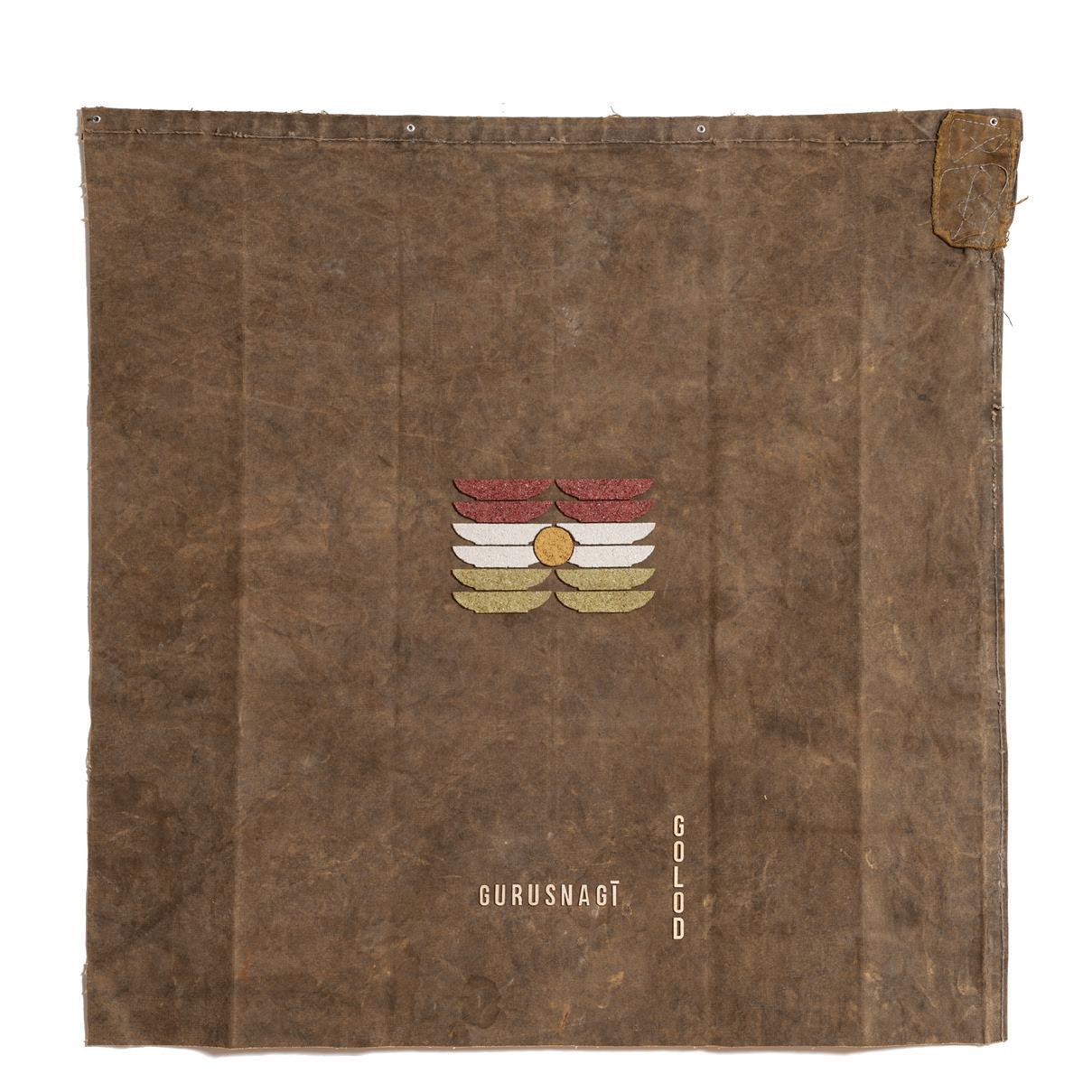

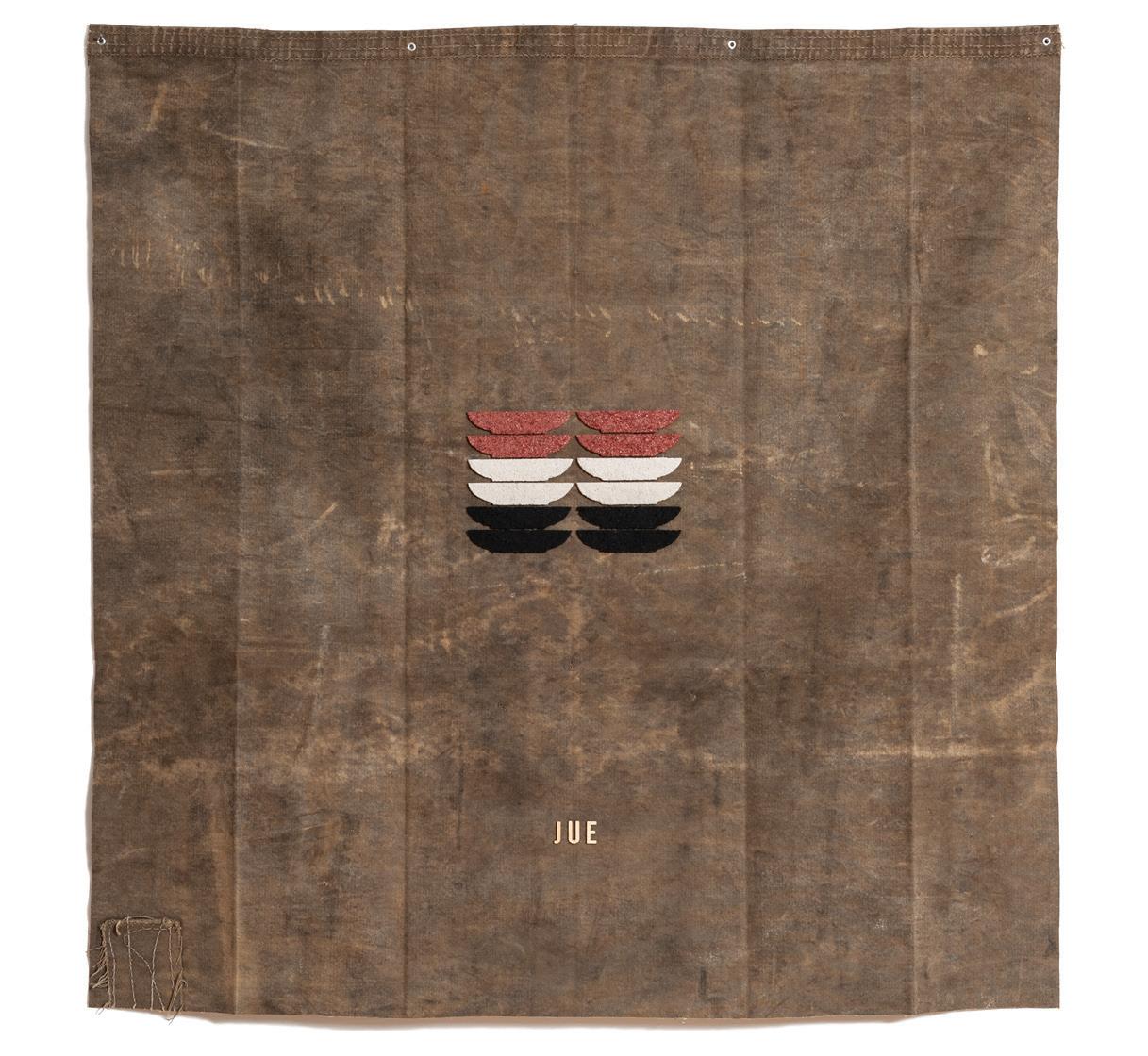
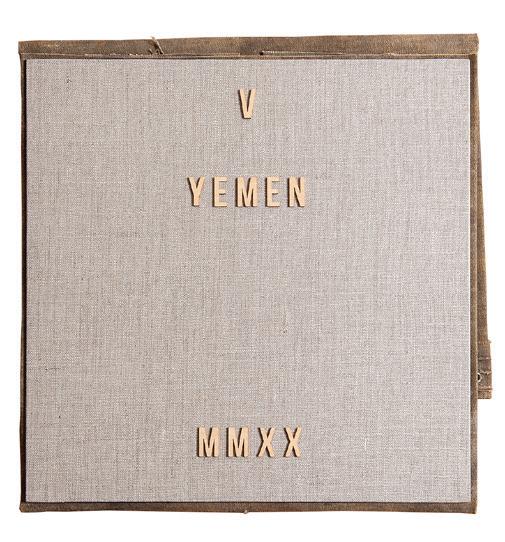
A respeito dessa sensação antagônica que a exposição sugere, Edgar Racy menciona: “São trabalhos tão distantes uns do outros que você nem imagina que uma pessoa que está lá no Congo, vamos dizer, vai pensar que um dia alguém vai colocar aquela garrafa e aquele copo em cima de uma mesa e fazer uma pintura. E que aquela pintura será vendida por um valor maior do que se fossem vendidas todas as casas de uma vila congolesa. Então esse contraponto, essa ligação que não existe, cria uma conversa na minha cabeça”. Como se houvesse uma linha que conectasse, mesmo que por meio da impossibilidade, o tempo e o espaço presentes em Via Fondazza e Vista Grossa
É com um olhar atento à dissolução dos direitos básicos da vida humana que esta exposição fala sobretudo da fome proveniente de tanta desigualdade social. Dando luz àquilo que se faz evidente a cada esquina, embora muitos sigam a fazer vista grossa, a exposição é um convite sutil e poético para se estar atento às urgências do mundo.
let’s say, thinks that one day someone will put that bottle and that glass on a table and make a painting. And that that painting will sell for a higher price than all the houses in a Congolese village combined. So, this counterpoint, this connection that does not exist creates a conversation in my head”. As if there were a line that connects, even through impossibility, the time and space present in Via Fondazza and Turn a Blind Eye.
It is with an attentive eye on the dissolution of the basic rights of human life that this exhibition speaks, above all, of hunger arising from so much social inequality. In light of what is evident in every corner, although many continue to turn a blind eye, the exhibition is a subtle and poetic invitation to bring awareness about the urgencies of the world.

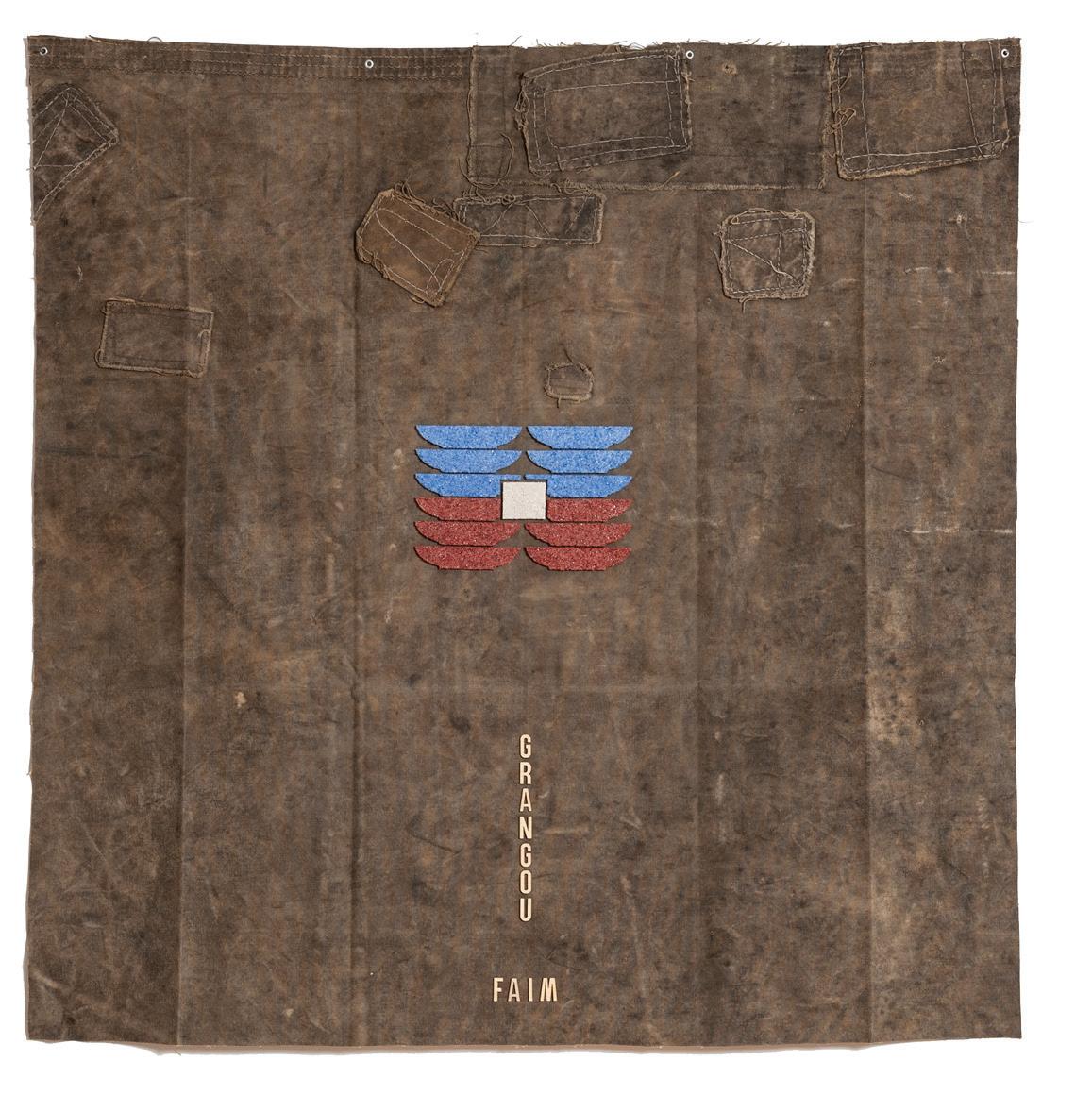
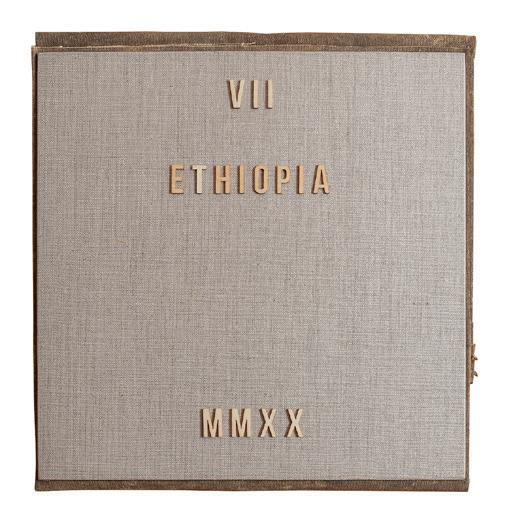
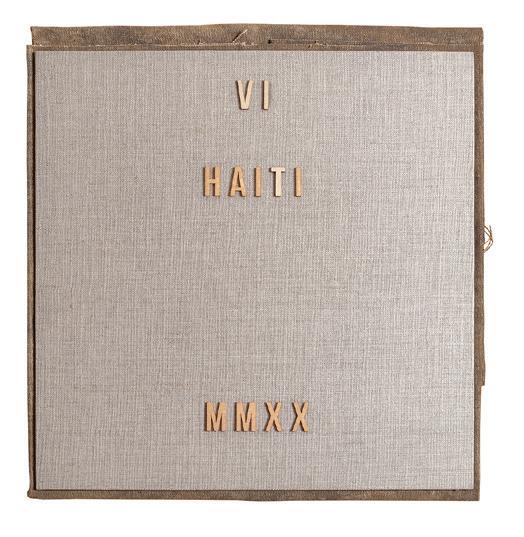
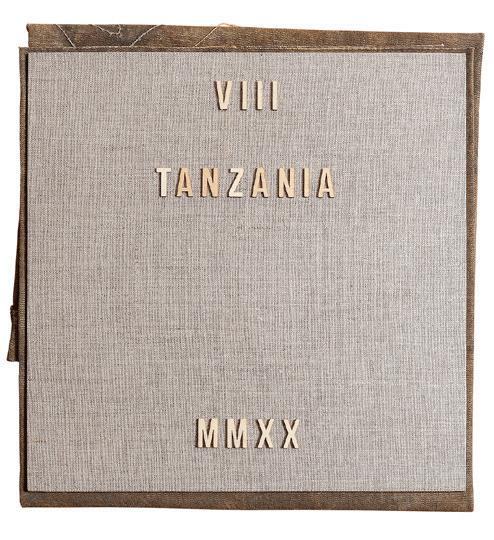


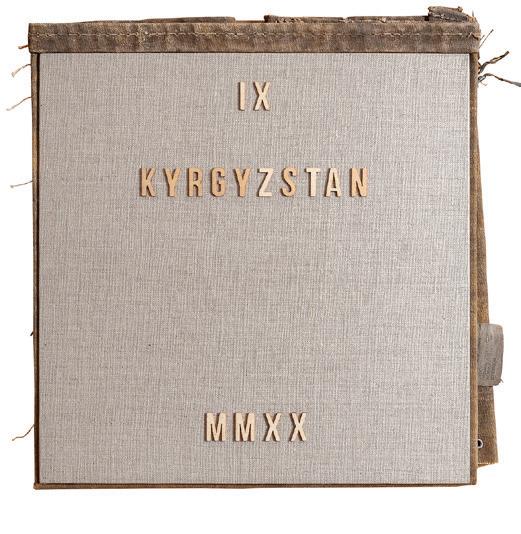
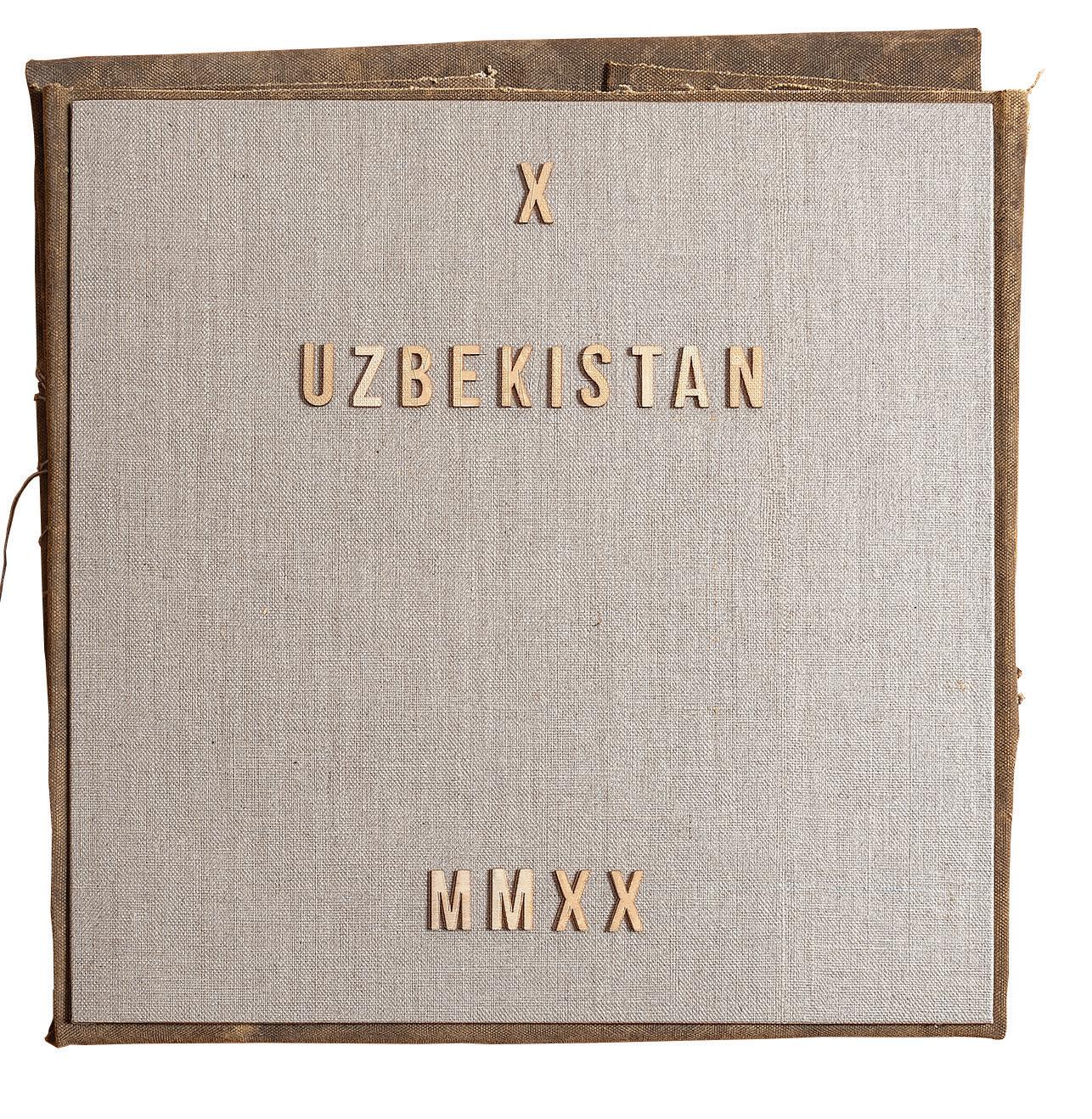

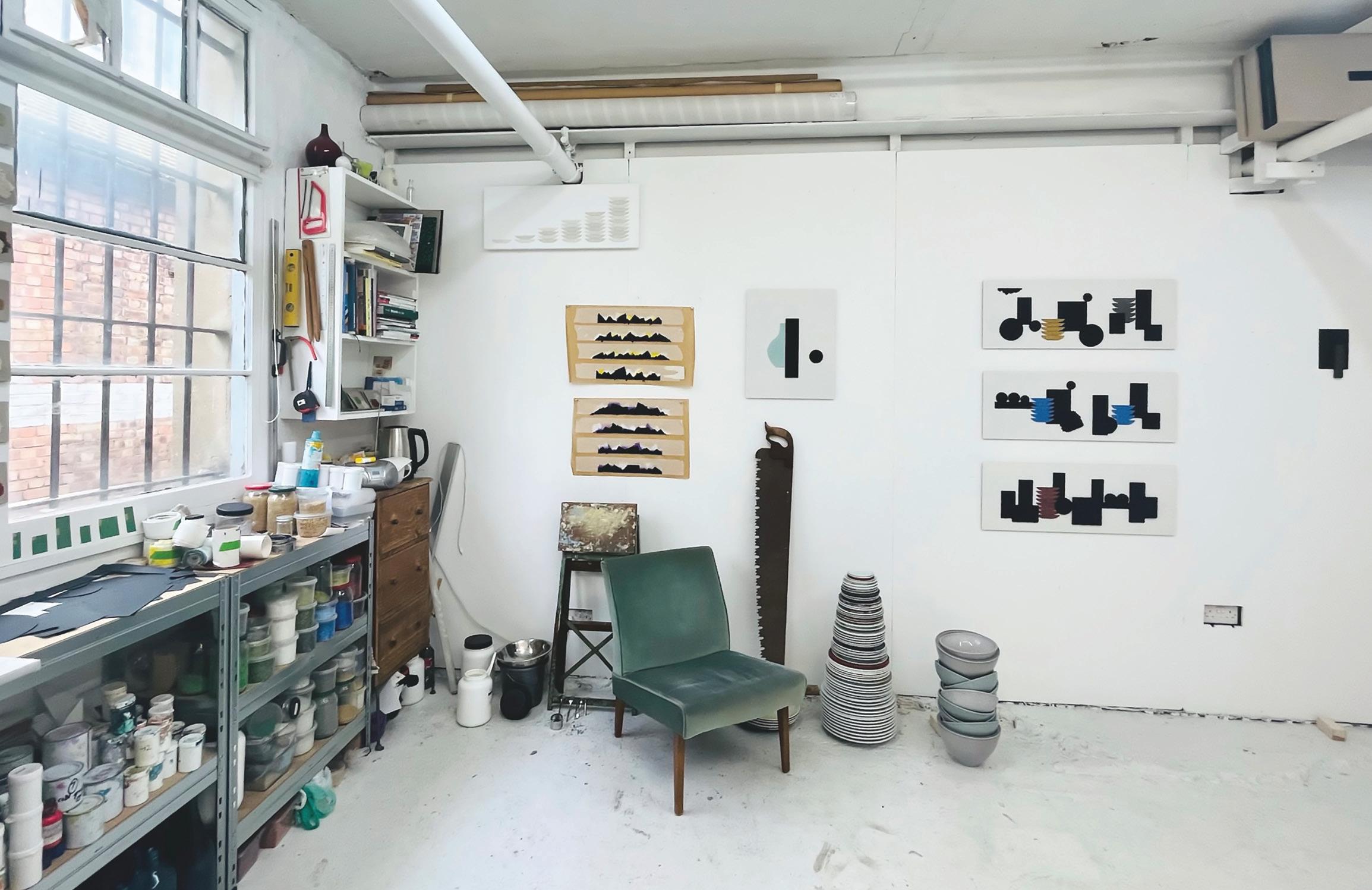
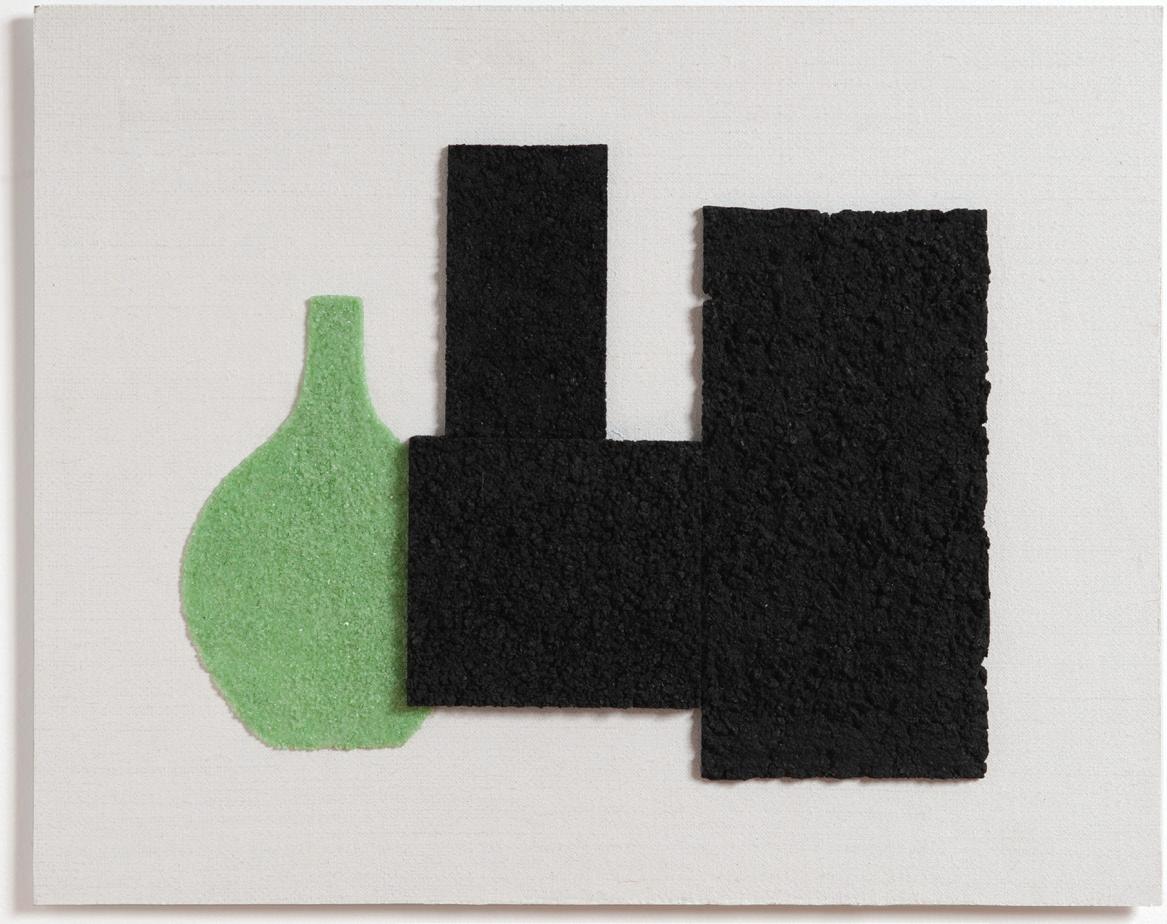
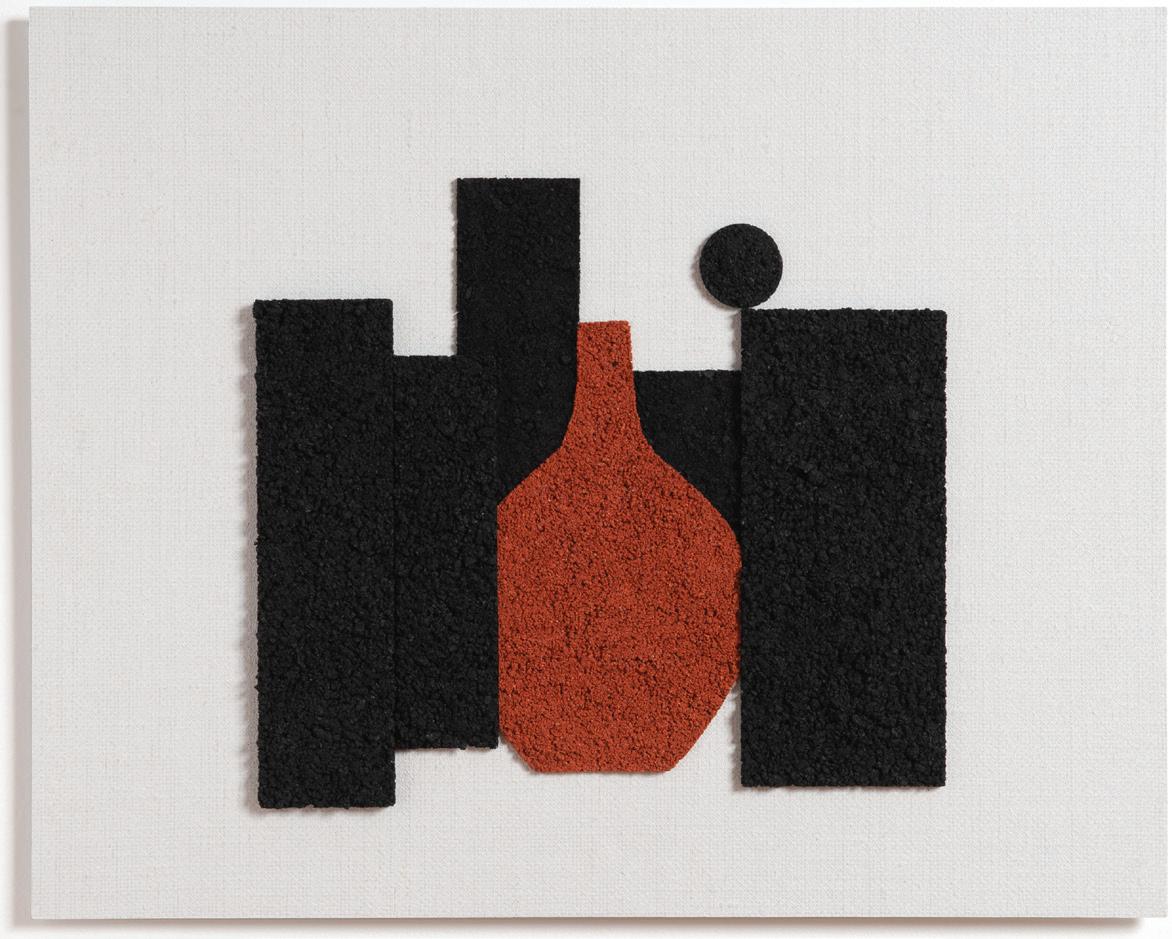
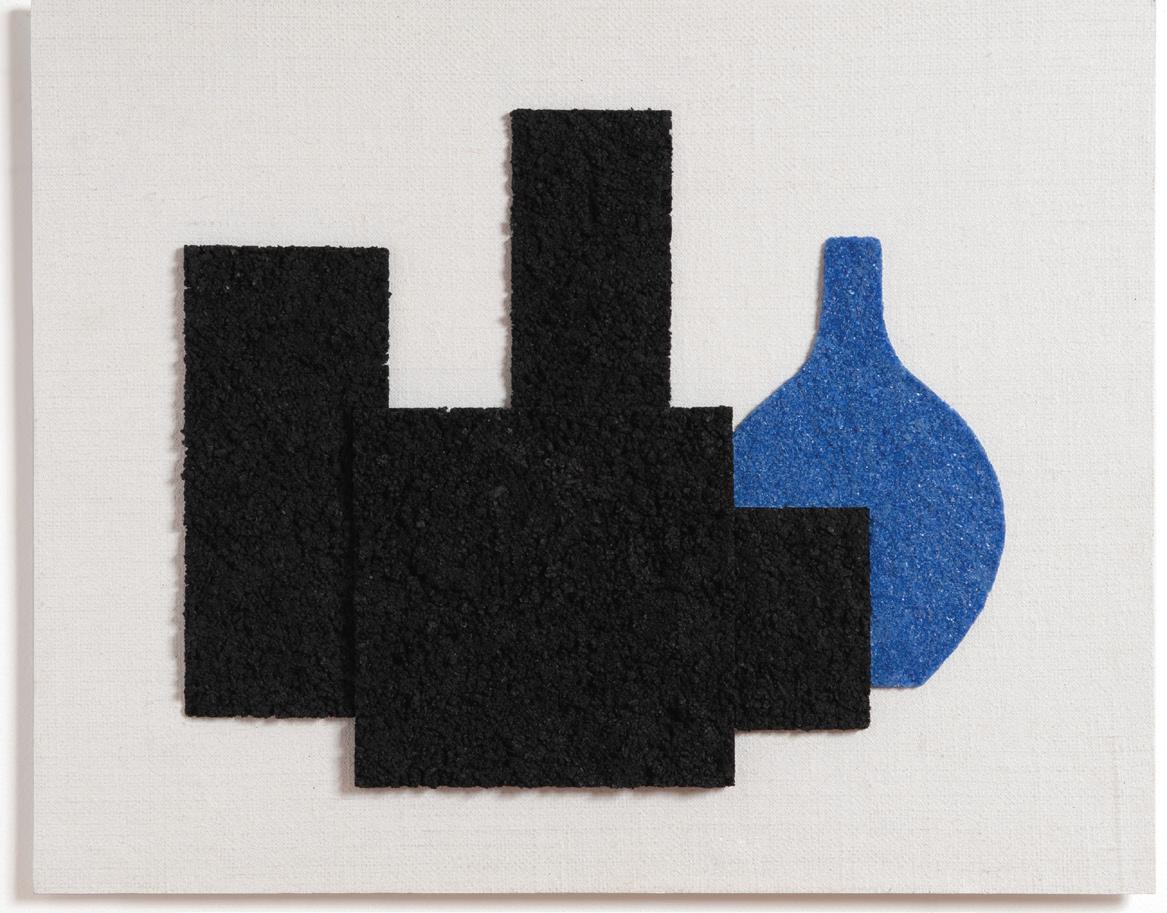
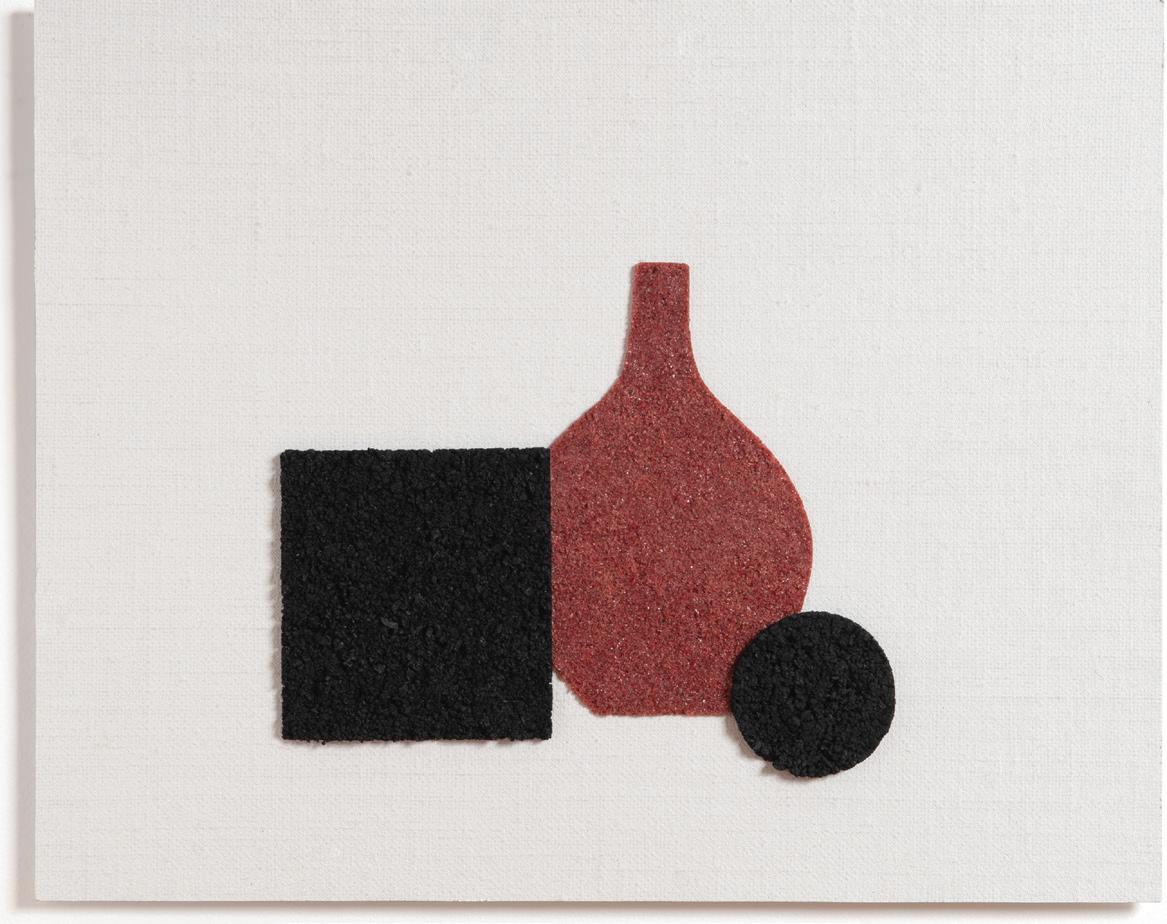
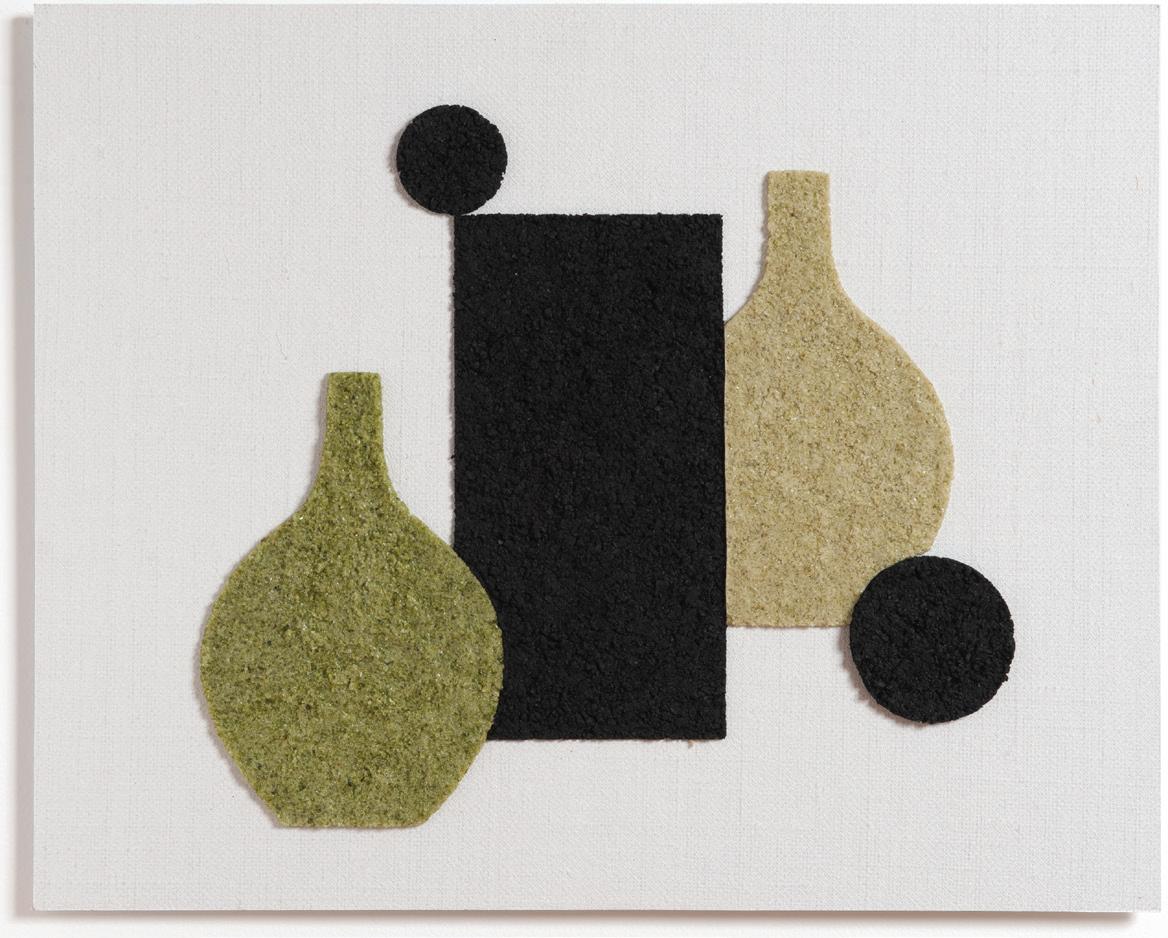
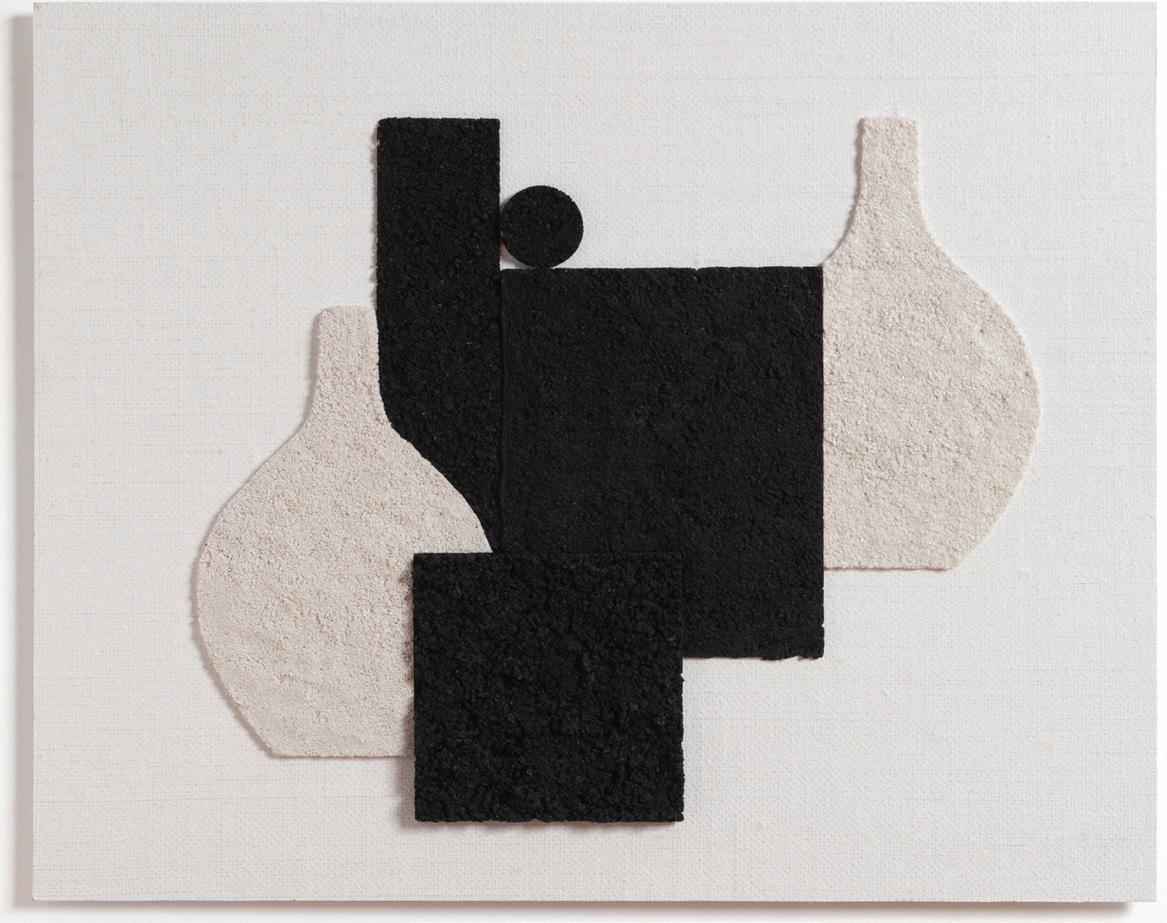
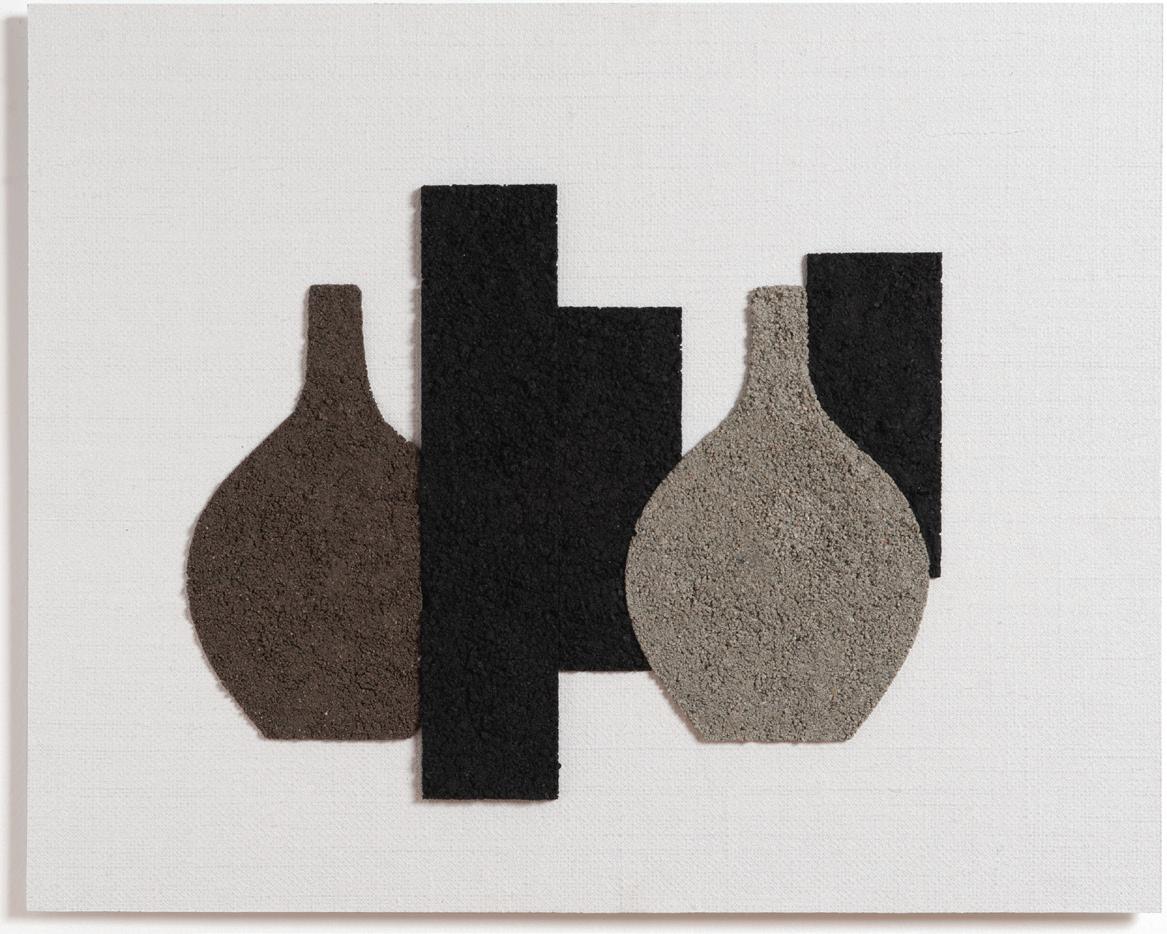
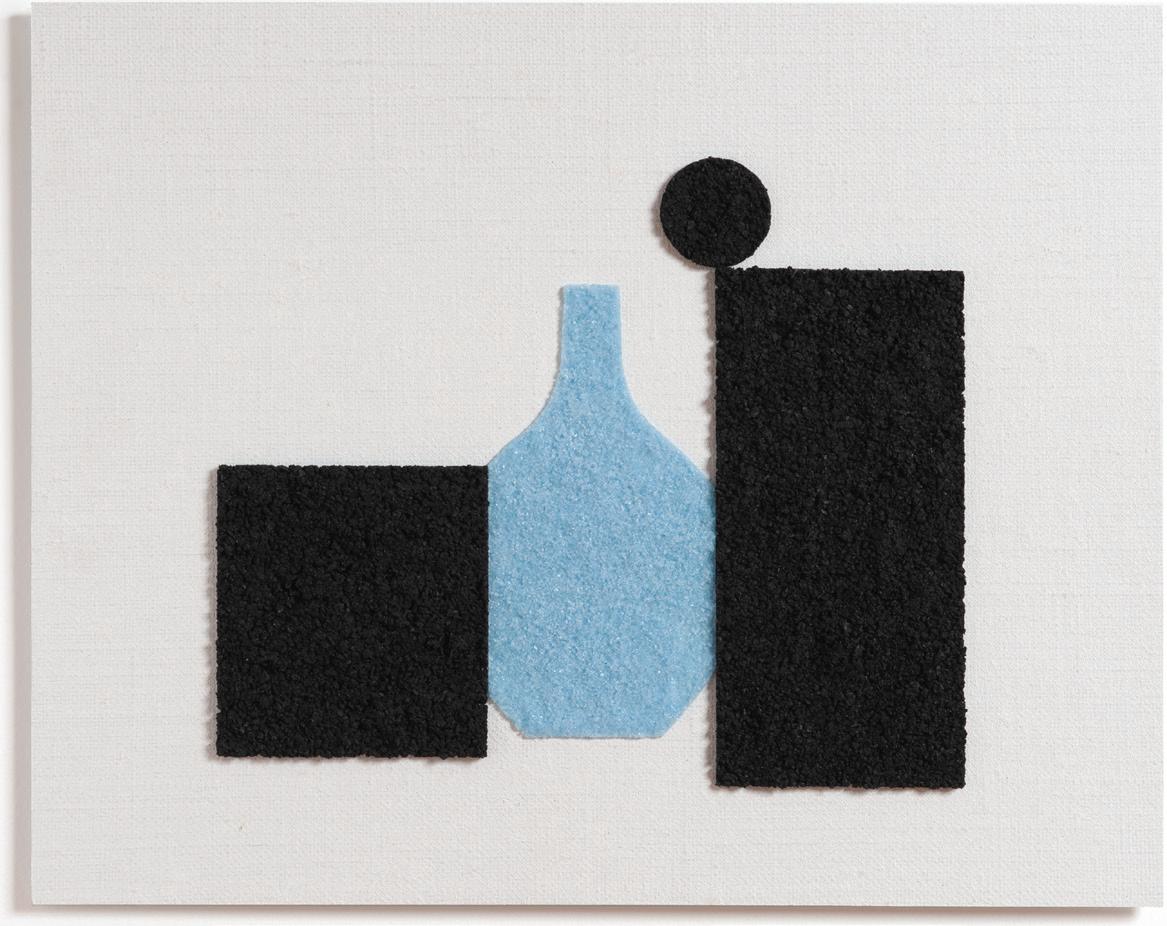
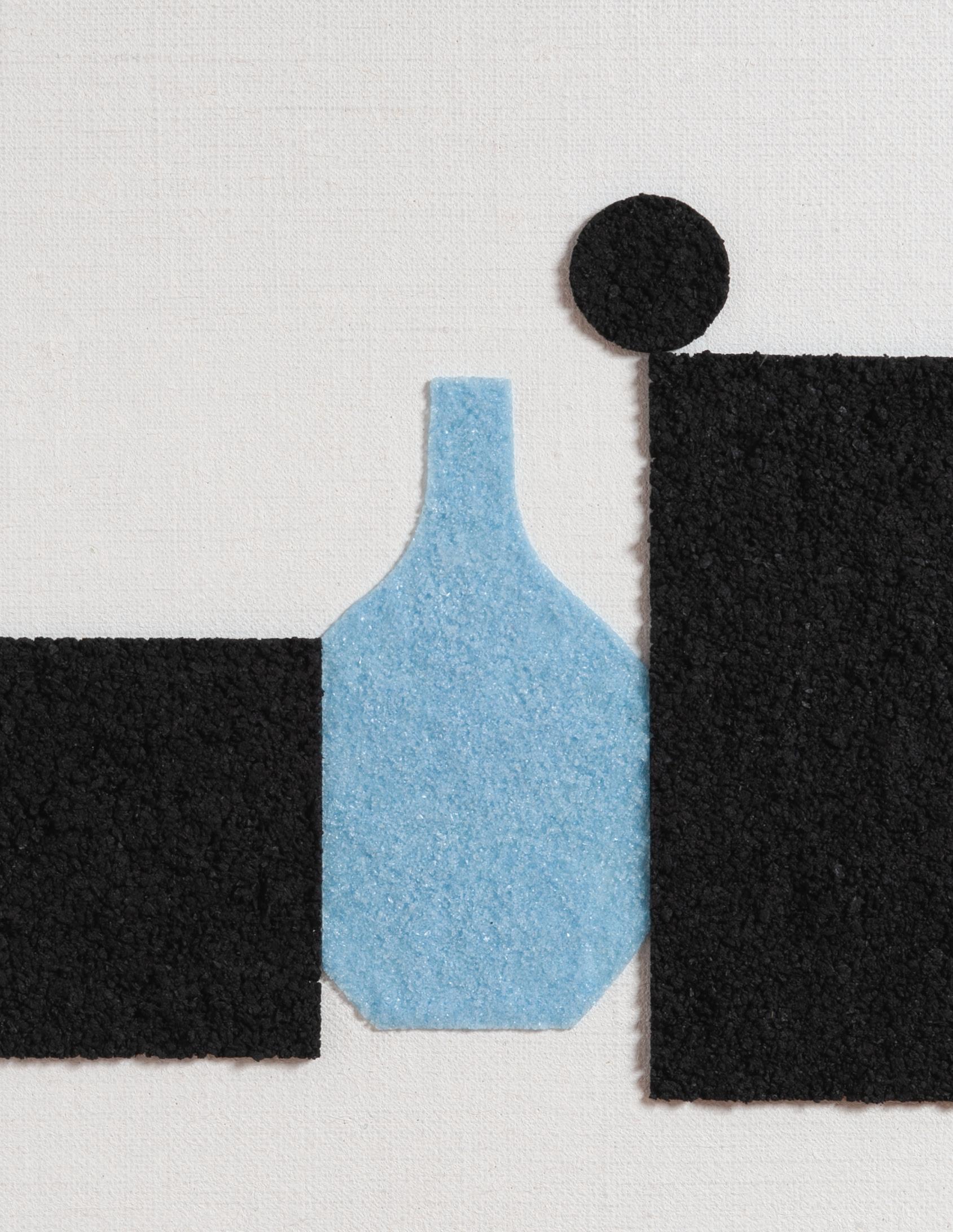
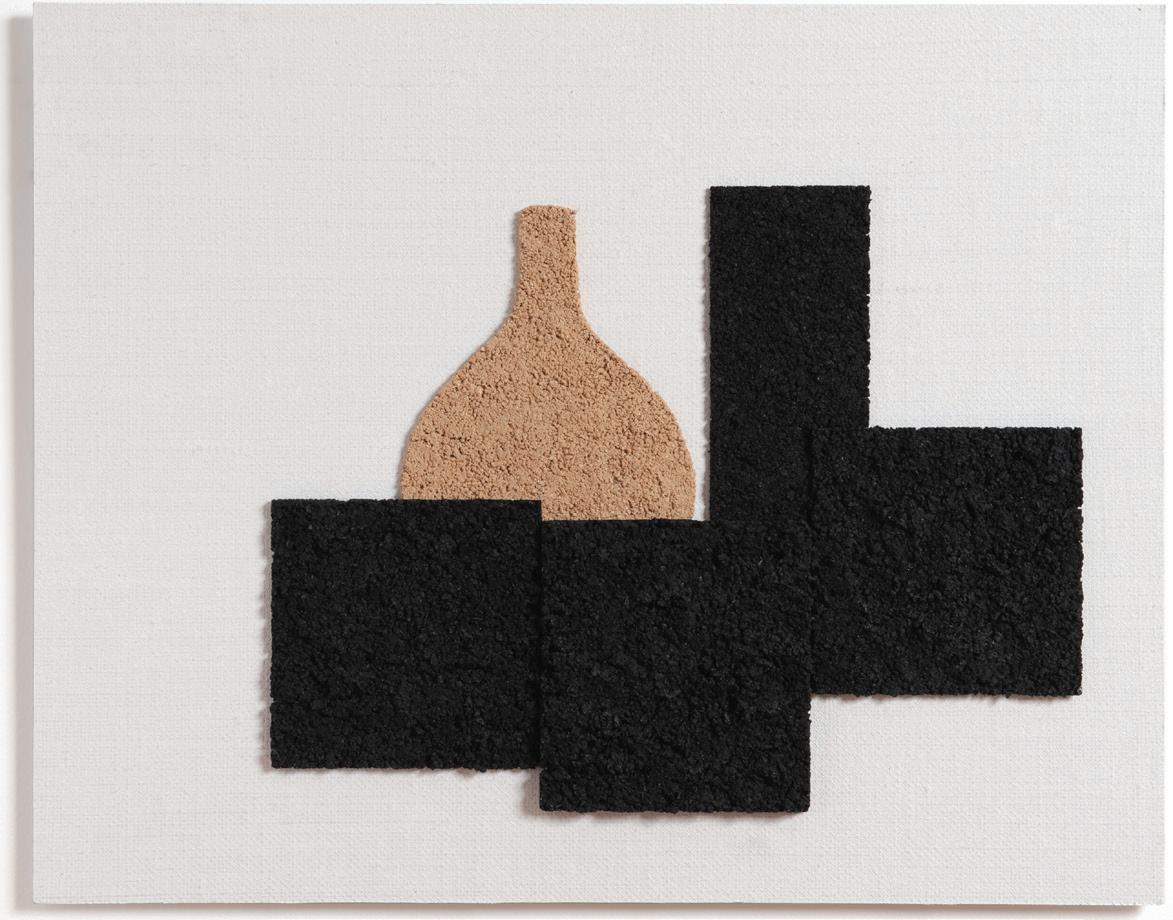

Curadoria curated
Paula Borghi
Texto| essay
Paula Borghi
Projeto gráfico | design
Germana Monte-Mór
Tradução | translation
Frederico Golebski
Revisão | proofreading
Otacílio Nunes
Fotos photos
João Liberato
Obras | works
Série Vista Grossa | Turn a Blind Eye series, 2021 Tecnica mista | Mixed media 90 x 90 cm | 35.1 x 35.1 in
Série Via Fondazza Via Fondazza series, 2022
Carvão e garrafa de vidro moidos sobre tela sobre placa de aluminio
Crushed charcoal and glass bottle on canvas on aluminium plate
50 x 40 cm | 19.5 x 15.6 in
Edgar Racy
1963 São Paulo, reside em Londres lives in London.
No fim da década de 80, início de 1990, estuda desenho com Carlos Fajardo e ali conhece um grupo de artistas que irá dar sequência às várias exposições. Também faz cursos de História da Arte, com Rodrigo Naves, e Filosofia, com Rogério da Costa.
Na Pinacoteca do Estado, participa de workshop com Amílcar de Castro. Faz parte do núcleo de acompanhamento a jovens artistas da Oficina Oswald de Andrade, “A Produção Refletida”. Em 2017/18 participa do curso “Imagem na Arte Contemporânea”, com Tiago Mesquita. Em dezembro 2018 muda-se para Londres.
Exposições individuais e coletivas: Mali Matsumoto Gallery, SP / Casa de Cultura do Parque, SP / OÁ Galeria, ES / Walthamstow Wetlands, Londres / Centro Cultural São Paulo, SP / Museu Teodoro de Bona, PR / Galeria Eduardo Fernandes, SP / Salão de Arte de Ribeirão Preto, SP / Museu de Arte Contemporânea – MAC, SP / XII Salão Nacional de Artes Plásticas, RJ / Museu de Arte Moderna –MAM, SP / IBAC, RJ / Paço Das Artes, SP / Palácio das Artes, MG / Funarte, RJ / Funarte, SP / VI Salão Paulista, SP. Coleções Públicas: Museu de Arte Contemporânea – MAC, SP (comodato coleção do Marcantonio Vilaça) / Museu Teodoro de Bona, PR.
Desde 2018 é representado pela Galeria Eduardo Fernandes, SP.
Rua Harmonia 145 Vila Madalena
São Paulo, SP Brazil 05435 000
In the late 80s, beginning of the 90s, he took part in a drawing course lectured by Carlos Fajardo and met a group of artists who would later engage in a sequence of exhibitions. He also partook in Art History and Philosophy courses lectured by Rodrigo Naves and Rogério da Costa, respectively. He participated in a workshop with Amílcar de Castro at Pinacoteca do Estado, and shared technical experience as part of the Mentoring for Young Artists Centre (A Produção Refletida) from Oficina Oswald de Andrade. In 2017/18, he attended Tiago Mesquita’s course “Imagem na Arte Contemporânea”. In December of 2018, he moved to London.
Group and individual exhibitions: Marli Matsumoto Gallery, SP / Casa de Cultura do Parque, SP / OÁ Gallery, ES / Walthamstow Wetlands, London / Centro Cultural São Paulo, SP / Teodoro de Bona Museum, PR / Gallery Eduardo Fernandes, SP / Ribeirão Preto Art Salon, SP / Museum of Contemporary Art (MAC), SP / The 12th Fine Arts National Salon, IBAC, RJ / Museum of Modern Art (MAM), SP / Paço Das Artes, SP / Palácio das Artes, MG / Funarte, RJ / Funarte, SP / The 6th Paulista Salon, SP. Public Collections: Museum of Contemporary Art (MAC), SP (the work is part of Marcantônio Vilaça’s collection) / Teodoro de Bona Museum, PR.
Represented by Eduardo Fernandes Gallery – SP since 2018.
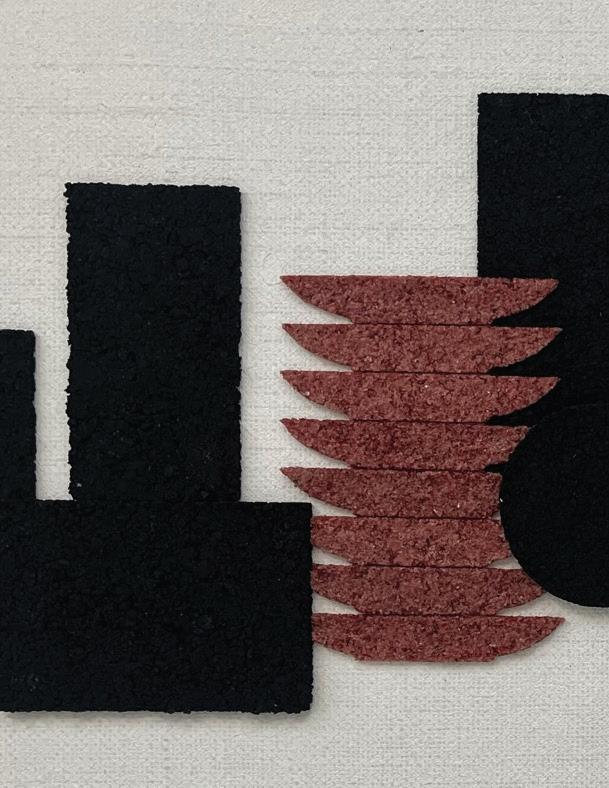


 EDGAR RACY VIVIST VISTA GROSSA | TURN A BLIND EYE
EDGAR RACY VIVIST VISTA GROSSA | TURN A BLIND EYE